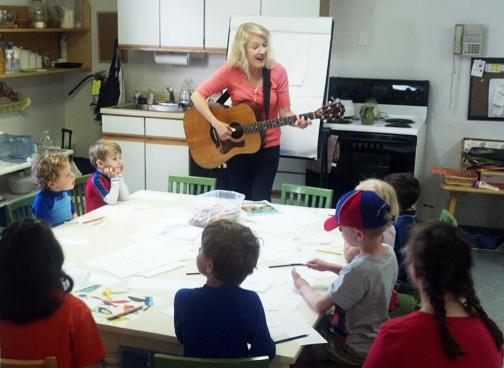Art and Music Can Help Kids with Special Needs!
Children with special educational needs (SEN) require a different approach to learning to help them cope with the tasks of everyday life. Targeted therapies can help them to learn basic skills such as thought processing, organization, memory, and paying attention.
Benefits
Music and art have several perceived benefits to children. They are sources of entertainment and can lengthen a child’s attention span, help them concentrate, teach them to focus, and improve communication abilities.
By drawing, a child can express his/her feelings and emotions. Where it is not possible for speech to take place, art and music can act as a substitute for words in order to make a point or statement.

Music and art are not only useful as recreation, but also as a means to enhance learning among children with special educational needs. Autism, for instance, is a developmental disability whose symptoms include various degrees of language and communication delays and difficulties in socializing.
Statistics indicate that 1 out of 110 American kids is affected with autism and the rate is increasing at 10-17% per year. Autistic children basically live in their own world and struggle with daily life.

Music therapy, listening to and learning to play instruments and singing, helps them to build self-confidence. Drawing, painting or sketching, also enhances motor skills and coordination. These things all lead to improved social contacts.
Practical Activities to Expose SEN Children to Music and Art
To make use of art and music therapy for kids with special needs, here are some suggestions for activities:
Musical Themed Parties
Musical themed parties are great at encouraging children to learn something new. Sharing fun music prompts children to move and sing, making use of their vocal chords and physical rhythms. If you can, hire professional entertainers who have experience with SEN kids.
Musical Events

Going to concerts, live events and festivals, is another way to introduce music to kids with special educational needs. They will learn about the variety of music that is available and benefit from its therapeutic effects. Author of ‘Musicophilia’ Oliver Sacks, M.D., believes in the power of music and its healing effects on the brain. He documented the positive effects of music in Parkinson’s patients and autistic children.
Art Galleries and Museums

Visiting museums also helps handicapped children in many ways. Works of art encourage visual perception. Exposure to various styles, colors, subjects, is educational to everyone, handicapped or otherwise. Talk to your children, ask them what they like. Tell them to draw what they have just seen.
Art and Music Workshops

Organize, or sign up for, art, music or dance lessons. Dancing is a great option for kids with autism or sensory perception disorder. Expressing themselves through dancing not only creates movement but also body awareness. Social interaction is also enhanced, giving them self-confidence. Whether it is through creating music, moving in a dance, or making art, these activities are all forms of creative expression. Be sure to look for programs and classes that have experienced special-needs instructors.
When visiting museums or other studios, make sure to plan visits in advance, note the layout of the place and take advantage of resources such as maps, narrative guides, tours and the like. Remember, every child is unique, so you might consider headphones for those who have anxiety or who require quiet spaces.

